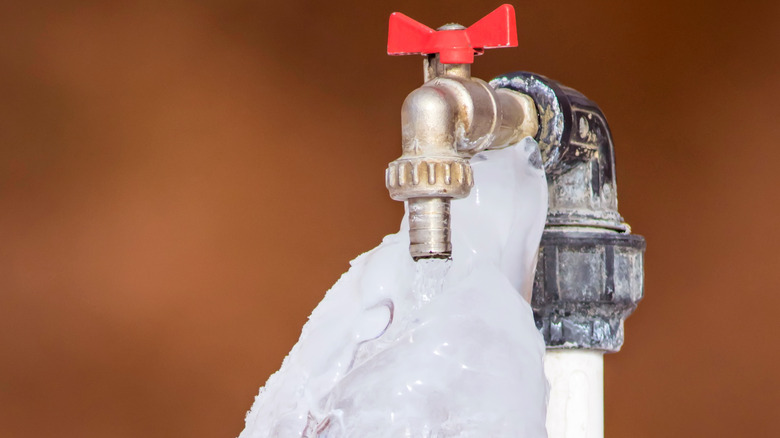Crucial Advice for Preventing Frozen Plumbing in Cold Weather Conditions
Crucial Advice for Preventing Frozen Plumbing in Cold Weather Conditions
Blog Article
We've encountered this article on How to prepare your home plumbing for winter weather listed below on the web and concluded it made sense to talk about it with you on my blog.

Cold weather can wreak havoc on your plumbing, especially by freezing pipelines. Right here's just how to stop it from happening and what to do if it does.
Introduction
As temperature levels decline, the danger of frozen pipes rises, possibly causing expensive repair work and water damages. Recognizing exactly how to prevent icy pipes is crucial for home owners in chilly environments.
Comprehending Frozen Pipes
What creates pipes to ice up?
Pipes ice up when exposed to temperature levels below 32 ° F (0 ° C) for prolonged durations. As water inside the pipes freezes, it increases, putting pressure on the pipe wall surfaces and potentially triggering them to break.
Risks and damages
Icy pipelines can lead to water system disturbances, residential or commercial property damages, and pricey repairs. Burst pipes can flood homes and trigger extensive structural damage.
Signs of Frozen Pipes
Recognizing icy pipes early can stop them from bursting.
How to identify icy pipes
Seek reduced water circulation from taps, unusual odors or sounds from pipes, and noticeable frost on revealed pipelines.
Prevention Tips
Protecting susceptible pipes
Cover pipes in insulation sleeves or make use of warm tape to safeguard them from freezing temperature levels. Concentrate on pipes in unheated or external areas of the home.
Home heating techniques
Maintain interior areas effectively heated, particularly locations with plumbing. Open up cabinet doors to enable cozy air to circulate around pipes under sinks.
Shielding Outdoor Pipes
Yard hoses and outdoor faucets
Separate and drain pipes garden hose pipes before winter months. Install frost-proof spigots or cover outside faucets with shielded caps.
What to Do If Your Pipes Freeze
Immediate actions to take
If you presume icy pipes, keep faucets available to soothe pressure as the ice melts. Utilize a hairdryer or towels taken in warm water to thaw pipelines gradually.
Long-Term Solutions
Architectural changes
Consider rerouting pipes away from outside wall surfaces or unheated areas. Include extra insulation to attics, basements, and crawl spaces.
Updating insulation
Buy high-grade insulation for pipelines, attic rooms, and wall surfaces. Proper insulation helps preserve constant temperature levels and reduces the danger of frozen pipes.
Final thought
Stopping frozen pipes requires aggressive steps and fast reactions. By recognizing the causes, indications, and safety nets, property owners can shield their plumbing during cold weather.
6 Proven Ways to Prevent Frozen Pipes and Protect Your Home
Disconnect and Drain Garden Hoses
Before winter arrives, start by disconnecting your garden hoses and draining any remaining water. Close the shut-off valves that supply outdoor hose bibs and leave the outdoor faucet open to allow any residual water to drain. For extra protection, consider using faucet covers throughout the colder months. It’s also important to drain water from any sprinkler supply lines following the manufacturer’s directions.
Insulate Exposed Pipes
Insulating your pipes is an effective way to prevent freezing. Pipe insulation is readily available at home improvement stores and is relatively inexpensive. Pay close attention to pipes in unheated areas such as the attic, basement, crawl spaces, or garage. Apply foam insulation generously to create a buffer against the cold. You can also wrap your pipes in heat tape or thermostat-controlled heat cables for added warmth.
Seal Air Leaks
Inspect your home for any cracks or openings that could let in cold air. Seal any holes around the piping in interior or exterior walls, as well as the sill plates where your home rests on its foundation. Additionally, make sure to keep your garage door closed unless you’re entering or exiting. Leaving it open creates a significant air leak that can lead to frozen pipes.
Allow Warm Air Circulation
During cold snaps, it’s essential to allow warm air to circulate evenly throughout your home. Leave interior doors ajar to promote better airflow. Open kitchen and bathroom cabinets to help distribute heat consistently around the rooms. If you have small children or pets, be sure to remove any household chemicals or potentially harmful cleaners from open cabinets for safety.
Let Faucets Drip
A small trickle of water can make a big difference in preventing ice formation inside your pipes. When temperatures drop significantly, start a drip of water from all faucets served by exposed pipes. This continuous flow helps prevent the water from freezing. Additionally, running a few faucets slightly can relieve pressure inside the pipes, reducing the chances of a rupture if the water inside does freeze.
https://choateshvac.com/6-proven-ways-to-prevent-frozen-pipes-and-protect-your-home/

I found that review about Winter Plumbing Precautions: Preventing Frozen Pipes when doing a lookup on the web. I beg you take the time to distribute this blog entry if you liked it. Thanks for your time invested reading it.
Booking Page Report this page